Gas for Climate publishes updated biomethane production potentials for EU Member States, assessing the feasibility of the 35 bcm REPowerEU target for 2030 and providing outlook to 2050.
Today, the Gas for Climate consortium published an update on biomethane production potentials in EU Member States , building on the renewed ambition of the EU to accelerate biomethane production and the advancements in technology.
The study shows that enough sustainable feedstocks are available in the EU-27 to meet the REPowerEU 2030 target (35 bcm). In our estimate, up to 41 bcm of biomethane in 2030 and 151 bcm in 2050 could be available. This is significant as the current (2020) EU natural gas consumption is 400 bcm (of which 155 bcm was imported from Russia).
As such, biomethane can play an important role in meeting the EU’s 2030 GHG reduction target and achieving net-zero emissions by 2050. Additionally, biomethane can increase European energy security by reducing the dependency on Russian natural gas and can alleviate part of the energy cost pressure on households and companies. To achieve this, significant scaling up is required both in the short- and long-term as today, 3 bcm of biomethane and 15 bcm of biogas are produced in the EU.
Whereas Gas for Climate previously estimated the sustainable supply potential in the EU-27 (and UK) at 35 bcm in 2030 and 95 bcm by 2050, for the recent publication our sustainable production potentials were updated to reflect the most recent developments. In the paper, a unified methodology is applied to identify both the short- and long-term potential of biomethane production in the EU, Norway, Switzerland and the UK, based on sustainable feedstocks.
Overall potentials
Enough sustainable feedstocks to produce up to biomethane 41 bcm in 2030 and 151 bcm in 2050 (EU-27).

Breakdown of the overall potentials
- A potential of 38 bcm is estimated for anaerobic digestion in 2030 for EU-27 increasing to 91 bcm in 2050. The top 5 countries in both 2030 and 2050 consistently include France, Germany, Italy, Poland and Spain. Key sustainable feedstocks to achieve these potentials are manure, agricultural residues and sequential cropping, where the latter dominates the potential for 2050.
- A potential of 3 bcm is estimated for thermal gasification in 2030 for EU-27 increasing to 60 bcm in 2050. The top 5 countries in 2030 and 2050 consistently include France, Germany, Spain, Sweden and Italy.
- Even more biomethane potential can be unlocked by looking at additional feedstocks (e.g. biomass from marginal or contaminated land and seaweed, as noted in the REPowerEU plan), and technologies (e.g. hydrothermal gasification of wet feedstocks, including organic wastes and residues).
This is the first analysis of specific biomethane potentials per country that has applied a unified methodology at the European level. Therefore, following the renewed biomethane ambition by the EU, the 35 bcm target needs to be pro-actively translated by Member States into national targets incorporated into their National Climate and Energy Plans and appropriate measures (e.g. permitting, financing, certification, etc) enacted to scale up their sustainable domestic biomethane industries.
Read the full publication here.

